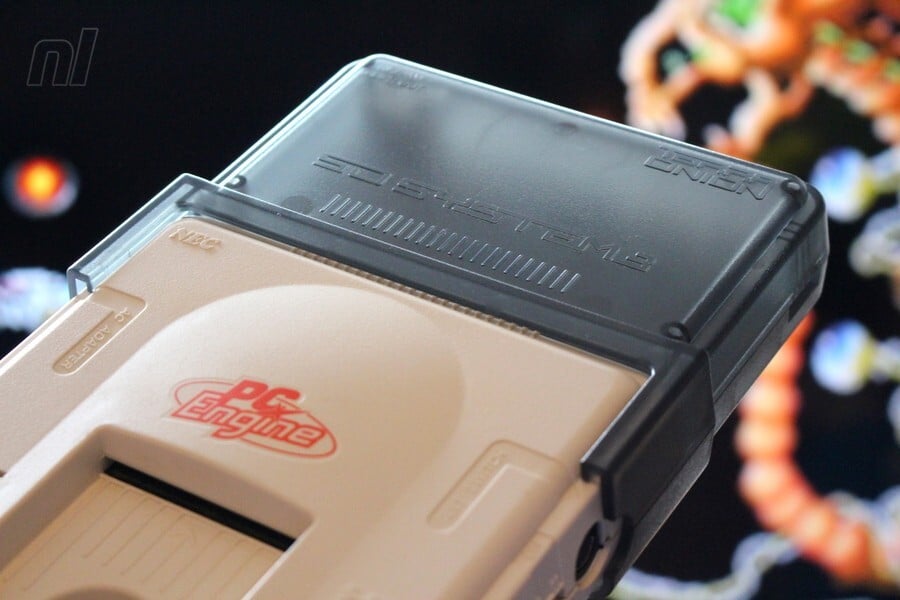
It's almost impossible to not fall in love with the NEC PC Engine. In its original Japanese form it remains an engineering masterpiece; it's the tiny console that could. Even after all these years it's easy to see why the system took Japan by a storm and gained legions of fans among "grey importers" in the west – not only did it look fantastic, it played host to some astonishingly brilliant titles, including an (almost) arcade perfect version of Irem's R-Type, which – for many – was the system's killer app in those early years. The PC Engine is also historically significant because it was the first console to genuinely rival the Nintendo Famicom in its homeland; released in 1987, it entered a market dominated by Nintendo, yet it managed to find a foothold and even kept a resurgent Sega – with its 16-bit Mega Drive – at bay.
Playing the PC Engine today is a massively rewarding experience due to the relatively low cost of entry and wide selection of excellent software. However, it's also something of a minefield for newcomers because NEC was addicted to releasing as many iterations and add-ons for the system as humanly possible. The base console was revised twice (the Core Grafx and Core Grafx II) while the CD-ROM² attachment – a first for the games industry – came in two variants. Then there's the PC Engine Shuttle, SuperGrafx, Duo, Duo-R and Duo-RX to consider. Confused yet? Throw in multiple memory-boosting "System Cards" which are required to play certain CD games, and it's easy to see why the PC Engine is regarded as something of a mystery, even by seasoned retro gamers.
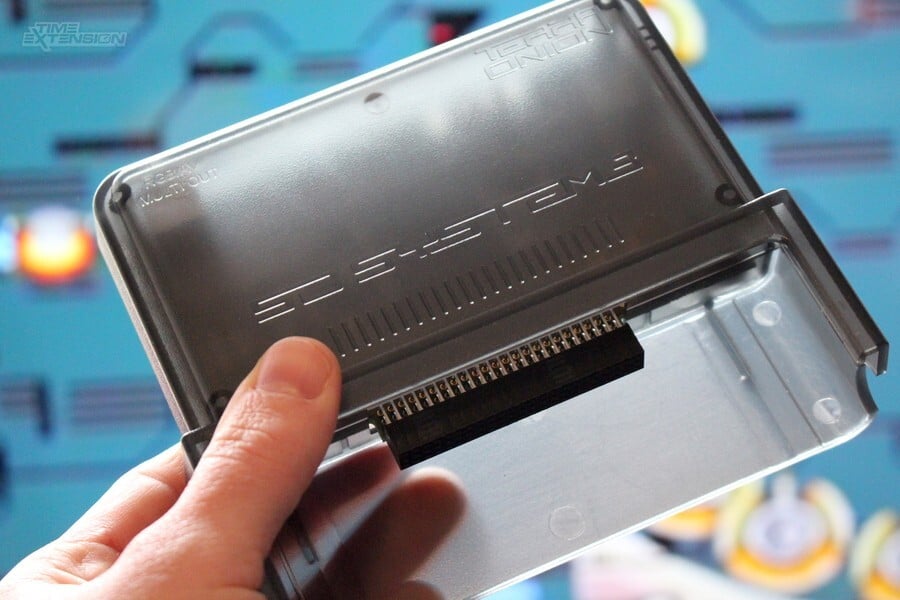
Thankfully, Spanish company Terraonion – which is behind the superb NeoSD Neo Geo flash cart – has come up with an all-in-one solution which not only overcomes the limitations of the original PC Engine, but adds in all of the CD-based goodness required to fully explore the console's library of titles. The Super SD System 3 is a module which bolts onto the back of the standard PC Engine and, via a MicroSD card, allows you to load HuCard ROMs and CD-ROM² ISOs.
It also includes support for the Arcade Card, the final card released for the console which introduced an additional 2MB of RAM for graphically complex titles like Fatal Fury Special, Strider and World Heroes 2 – as well as previous CD-ROM² and Super CD-ROM² games. As if that wasn't enough, the module also comes with RGB output, something that is only possible on the original hardware via modification (composite AV is the best most PC Engine variants can manage, but in the case of the white PC Engine, RF is the only output option). To cap it all off, save data can be committed to the MicroSD card without having to use the Ten no Koe Bank add-on device – which is fortunate, because the Ten no Koe Bank connects to the same port that the Super SD System 3 occupies, so it's impossible to use them both at the same time.
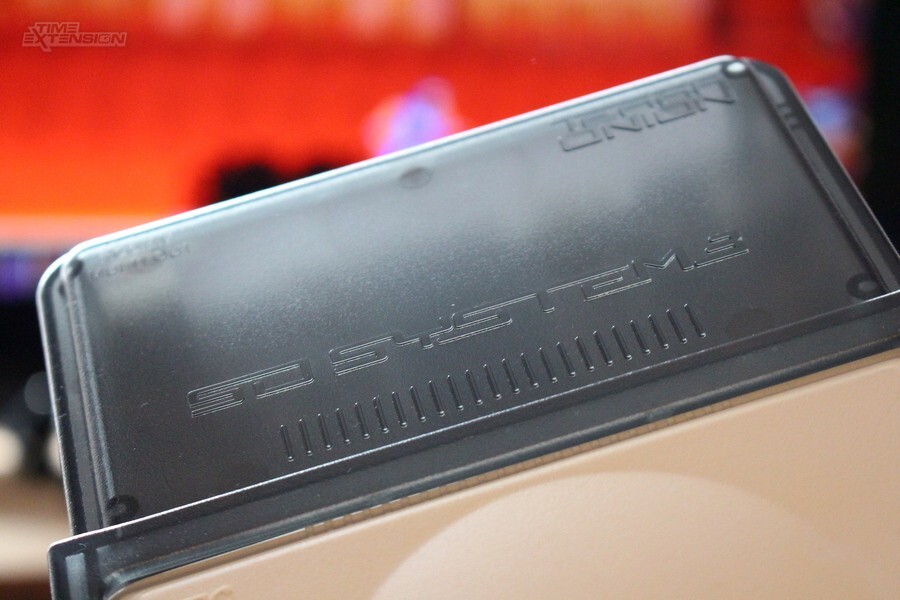
As you can imagine, all of this makes the Super SD System 3 something of a dream ticket for PC Engine fans; it even allows you to play SuperGrafx ROMs – as long as you connect it to a SuperGrafx console, of course. The AV multiport also handles composite video (more on that in a bit, though) and the RGB signal via SCART is absolutely stunning (especially when run through an upscaler like the Open Source Scan Converter); it even has stereo audio. When you consider that many modders charge quite a bit to add RGB-out to existing PC Engines, the relatively high cost of this unit is easier to stomach – even more so when you add up the combined cost of buying items like Super CD-ROM² drives, Arcade Cards and (of course) the games themselves. $290 / £210 / €240 sounds pretty appealing.
Like the NeoSD, the Super SD System 3 comes with a lovely front-end which is easy to navigate and pretty to look at. To access the menu you have to hold down Start when booting up the system; you can then toggle between HuCard games and CD-based titles. Load times are short and we didn't encounter any issues with the titles we tried; everything runs like a dream without the headache of failing CD drives or the need to plug in several different pieces of hardware to get everything working. You just drag-and-drop ROMs and ISOs onto a MicroSD card, load it up and the Super SD System 3 does all the rest.
Of course, it's necessary to leave your morals at the door when you're using a device like this; downloading ROMs and ISOs is an infringement of copyright, and by doing so you're not supporting the companies that made these games possible in the first place. Given the age of the PC Engine it's to be expected that there are a great many games which are no longer in active circulation, and the studios and publishers behind them have long since passed into memory. ROMs are, for many people, the only realistic means they have of experiencing these past classics.
However, titles like Dracula-X: Rondo of Blood, Bonk's Adventure and Soldier Blade have been re-released on several different platforms, giving you the chance to legally own them. We're not going to lay down any guilt-trips here – if legal avenues exist which allow you to support content-makers, then you should take them – but we're also not going to pretend that the world of ROM distribution doesn't exist, and that it doesn't provide a valid means of keeping the past alive. Given that both CD and HuCard formats have a limited lifespan – not to mention that CD drives will eventually burn out and become useless – devices like the Super SD System 3 represent a vital lifeline to gaming's history.
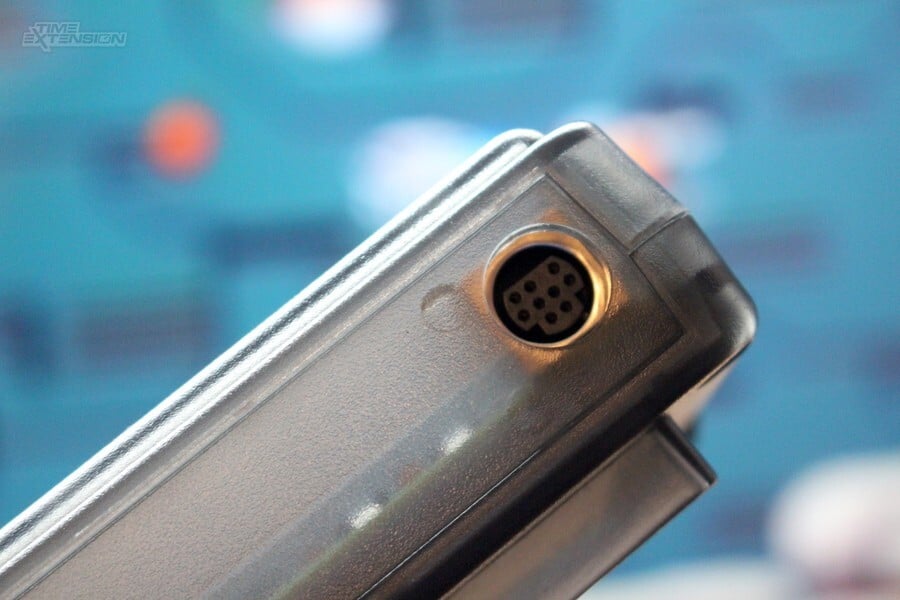
If you're interested in the PC Engine then you'll no doubt be reaching for your wallet as we speak, but there are few caveats to mention here. Shortly after launch, a fault with the Super SD System 3's RGB output was spotted, and production was halted while Terraonion addressed the issue. More recently, it has been discovered that the AC coupling cap for composite video is the wrong way around, which could have the potential to cause failure. It's unlikely that this problem would result in anything serious, and, as one electronics expert on Neo-Geo.com by the name of Voultar points out:
Now, is this going to burn down your house? Probably not. Is it going to catch fire? More than likely not. Will composite video performance suffer? Sure it will, and that's very measurable. You're going to have a steady voltage error in your coupling component (capacitor). How much will your picture quality suffer? That's hard to say. The clamping element of your Television [or] Scaler will be what determines how well the DC "drift" is handled. It may also impact how well TV's, BVM's and Scalers slice or "lock" onto the sync signal, if you're syncing on composite video. But it's not a huge god damned deal. Just reverse the thing, if you can. Or if you don't have any intention of using composite video, p*** on it. It will do you zero harm. It's not the end of the world, boiz. Absolutely definitely isn't a reason to do a unit recall. That would be f****** ridiculous.
It's worth stressing that this only impacts people using the AV port for composite video (or leads which use composite for sync), which is likely to be a small percentage of users. Most will opt for the superior RGB – we used a Retro Gaming Cables Mega Drive Mk2 RGB SCART lead and didn't encounter any problems. Terraonion is amending the spec moving forward but at the time of writing a recall for existing units is unlikely; however, if you have even the most limited soldering skills it's easy enough to remove the capacitor in question, turn it the right away around the re-solder. If you're thinking of making a purchase then you might want to make sure you're getting the revised version which fixes this issue.
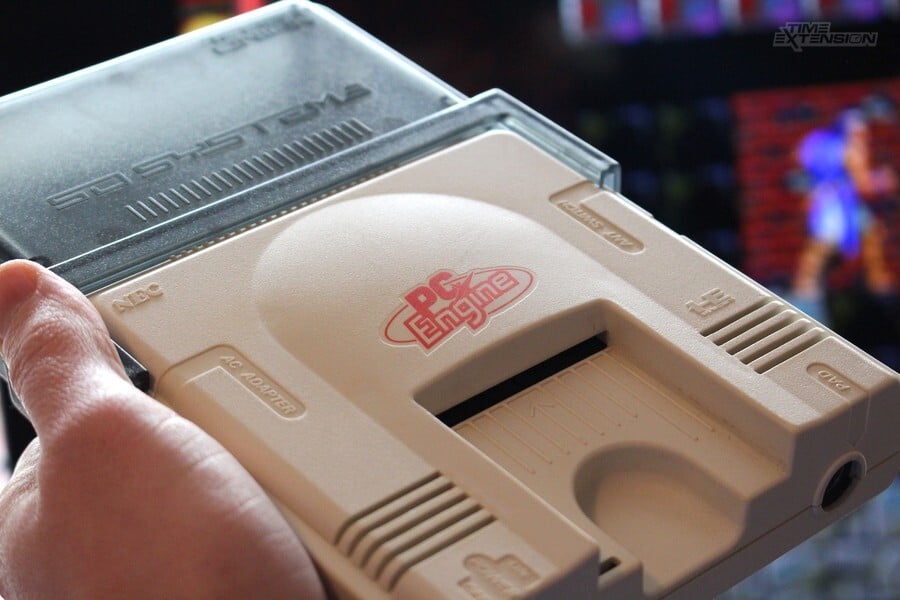
Niggles aside, the Super SD System 3 is a remarkable piece of kit which grants complete access to the entire PC Engine library. Granted, the price of entry is high, but compared to what it would normally cost for you to amass the required hardware and software, it's a drop in the ocean. If you've always wanted to learn more about Nintendo's biggest rival in Japan during the Famicom era, then this system is the best place to start; loose white PC Engine consoles can be picked up online relatively cheaply, making the Super SD System 3 itself your only large investment on the route to HuCard and CD-ROM² heaven.
This article was originally published by nintendolife.com on Wed 4th April, 2018.






Comments 40
I loved the PC Engine, I had a ton of games at one point. The TG 16 design was crappy in comparison and we were missing so many great games that didn’t make it over.
... this thing is ridiculously tempting...
that's pretty sweet.
i use an emulator for these but remember a friend with a tg16 + cd, a turbo duo, and the system cards/games.
that thing was pretty great. lords of thunder and gate of thunder were great fun.
I always wanted to add a PC Engine to my collection but was put off by the hundred different models and add-ons. This is tempting but still out of my price range at €240.
My brother recently got one of these and it's quite a treat.
The fact that it functions as an optical-drive emulator is quite remarkable.
Like the sound of this. I was contemplating the Everdrive for the PCE but that didn’t cover the CD games.
I’ll admit to not having a clue about all the different iterations of PCE consoles, so if I was looking to get one console that can play ALL games via this device, which one should it be? Is that even possible?
Also, in terms of PAL consoles is the hardware locked down to 50hz like a PAL SNES, or can it output 60hz if ntsc software is used via this device?
Why did NEC even release the super grafix? They only had 6 games on it or something.
@GravyThief Just get the original white PCE, or one of the Core Grafx models (the grey ones). You don't even need a step-down converter - you can use a Mega Drive Mk1 PSU.
I can't recommend their products enough, and yet I can't recommend not purchasing direct enough. I bought my NeoSD and the Super SD System 3 from them direct - customer support wasn't abysmal, it was literally non-existent. After not receiving a shipping update from them for weeks, despite the products being listed as in stock, I opened a support case with them, updating twice a week asking for a response. I never received a response 5 weeks later until the products magically appeared on my front door, after I had already opened a dispute with my bank (Which I had to cancel).
Short version - the products are awesome, but stay away from TerraOnion. Buy from a retailer like Stone Age Gamer if you can.
@Damo thanks Damo. Gotta love the trusty Mega Drive Mk1 power brick. I think it powers all of my Japanese retro consoles!
@Mr_Pepperami perhaps it was a sudden response to possible competition. Of course, the Super Famicom would be coming the next year. There was also speculation that Namco wanted to do a home system and NEC might have been looking for partners besides Hudson. But I don't know. Maybe they were just attached to the idea of releasing a ton of hardware and seeing what stuck.
The most baffling thing about the Supergrafx is that its tiny library was spaced out. I think it took two years for its few games to come out.
@sdelfin really?? It took years for those games to come out? Had no idea that was the case that is very strange. That portable pc engine was also a strange choice. Sega seemed to make the same mistakes but on a grander scale. Spending loads of money on projects they weren’t 100% behind.
@Mr_Pepperami Yep. It's really quite strange. I only found out last year sometime when I was curious about the SuperGrafx and read up on it. Daimakaimura(Ghouls 'n Ghosts), the big game on the system, didn't even come out until 1990. I think two games came out in 1991. The portable system was a cool idea. I don't know about Japan, but I don't think the customers in western markets were ready to pay the kind of money a portable like that cost at that time.
"Low cost of entry"? Which decade are we talking about, here?
Granted, I've only been looking at units that can play CD-ROMs, but I feel like if I was ever going to get one, it would've had to have been before scalpers and scrappers drove -everything- sky high. Now I just have to remain content with emulating that stuff on the Wii.
Seems nice, but at the same cost of a Switch, and AV problems being oddly concerning...it may be the best option, but I still feel there will be an even better one some day.
This is one game device I have never had the opportunity to play with.
This part of the review is a huge error and should be corrected ASAP...
" More recently, it has been discovered that the AC coupling cap for composite video is the wrong way around,.....[It's worth stressing that this only impacts people using the AV port for composite video, which is likely to be a small percentage of users.]
The reversed capacitor does not only effect Composite video, BUT ALSO EVERY CABLE which uses CSYNC.. (sync on composite). This includes many SCART cables, and all HD Retrovision cables!
The way Terraonion is handling this issue is despicable!
Not only did they barely test their unit before selling it, but after discovering this huge screw up, they tried to deny it, then when that was impossible, they tried to downplay it.
Own your mistake and replace ALL of the units on your own dime. Right away. Make sure all existing customers get their units fixer BEFORE selling out if the second batch of fixed units to new customers!
I wish they would do a PC Engine mini. I guess they wouldn't really need to change the size though haha.
Does it do component out for those of us in non scart regions?
Nice writing and a very interesting subject this!
Kudos
@Mr_Pepperami To compete with the Megadrive and SNES more advanced games. It was pretty much abandoned prior to release but they had a small catalogue of games ready so it launched. Very small immediate sales saw its rapid cancellation.
This is an amazing piece of kit but why do we get random reviews of non Nintendo goods on the main Nintendo site? You may aswell open it up and just start covering gaming in general.
@YANDMAN I always saw it as such a shame as the PC engine was such a great console. It also did well in Japan as well. Would have loved to have seen where it could have gone next. It wasn’t to be
@YANDMAN We've covered PC Engine on the site as part of the Virtual Console, so it's hardly random...
@Tim_Vreeland Yes, but wait until they've fixed the c-video issue mentioned in the review.
@Averagewriter No, this device need the expansion port. It does work on the PC Engine LT, however - I tested that just prior to selling mine. If you're looking for a cheap solution to use with this, the Core Grafx and Core Grafx II work as well. Since I sold my PC Engine LT (They're stupid expensive), I picked up a Core Grafx for about $50 to use with this.
As great as this device is, it's still really expensive for a retro gaming solution, and that's on top of buying the system itself and any of its games. Most people would be better off just buying the games they want from the Wii / Wii U Virtual Console.
@Damo wow a tenuous link. The difference is games being on the virtual console and games being played on a non Nintendo console.
Pretty obvious to me Damo.
@BulbasaurusRex Yeah but there are a tiny tiny amount represented of the huge and amazing catalogue.
@Mr_Pepperami It is a fantastic system. personally i'm a TurboGrafx-16 guy by preference. I just love the system and its colour aesthetics. But across the platforms there are so many incredible games.
@YANDMAN yeah I have a pc engineduo r in absolutely perfect condition. It’s my pride and joy. The games are completely one of a kind. It’s such a neglected classic. Honestly love it
@YANDMAN Perhaps, but most of the good exclusive games are available, and even then there aren't that many all-time classics. Its library pales in overall quality compared to either the SNES or Genesis / Mega Drive (and if you're going to include the games that require add-ons as part of the Turbografx library, then you need to also include the 32X and Sega CD games as part of the Genesis library).
@BulbasaurusRex Nope you are completely wrong. The CD library has tons of great games and the virtual console lists something like five in total, there are probabaly 30 essential titles at least.
@Mr_Pepperami Good for you man, that's a beautiful system to own. I've got a TG-16 arcade cabinet.
@BulbasaurusRex I won't disagree with you that this isn't for most people - though to be fair, retro gaming in general isn't for most people. Most people do not want to go through the hassle of purchasing an old system, especially the PC Engine CD/TurboDuo systems which are prone to breaking, and going through the trouble of connecting it to their TV. Then you often have to worry about an upscaler or having a separate CRT for retro gaming. I've done both, and have since settled on a Sony PVM CRT and sold my XRGB mini.
For what this thing does, it's a pretty good deal if you're the type that wants to play on original hardware. You don't have to worry about having a CD system prone to breaking, you get decreased load times for CD, and you don't have to buy system cards which are very expensive. So if you are the type that was going to play on original hardware anyway, you'd be spending a fair amount of cash either way.
That said, I am disappointed in the issues with this device. I cracked mine open last night, and sure enough, the C60 capacitor was installed incorrectly. It was a 2 minute solder job to fix, but unfortunately, that means you probably shouldn't buy this unless you are comfortable with working on electronics either. That's becoming an increasingly important skill for any retro game system, but it is quite disappointing to have to do that to a brand new device. I won't go into detail on the quality of the library, since it's pretty subjective, but I think there are a bunch of great games on the PC Engine, especially considering the CD library.
@YANDMAN hahaha an TG 16 arcade cabinet? Wow. That sounds fantastic. I tip my hat to you sir
@Averagewriter No. The PCエンジンGT as well as its US counterpart, the TurboExpress, do not have an expansion port.
Similarly, the ShuttleGrafx had a limited pin expansion port, and is probably also not compatible, but I do not have one to test.
On the other hand: I have tested it with a TurboGrafx-16 and a PCエンジンエルティ「enjin eru ti」aka a PC Engine LT.
It functions, but so far, leaves a LOT to be desired.
Not muxing audio back in like the original IFU and Super CD-ROM systems for example makes me wonder a lot about their design. Particularly as they are so upset about the RGB output bugs (I have a second revision, at least, but they repeatedly stated on their forum they regret including that functionality since they incorrectly implemented it and it has cost them. Given how they mux in CD-DA audio over the RGB output port though, there is fundamentally no other way they could have created this given their engineering, which I don't think is demonstrably amazing, I am pretty certain none of the original CD-ROM drives muxed audio that way, albeit I only had a TurboGrafx-16 CD-ROM unit and a Super CD-ROM^2 drive for a Core Grafx II, not an original IFU).
The device itself seemed to work better when I first got it than when I used it again last night. Maybe the develo box I was using between a controller and the LT was causing memory mapping issues? All arcade card functionality ceased working. I have not had time to debug it further, I am hoping to at least get it back to levels of functionality where it was when I was first testing it and Arcade CD game images function again but I can't begin to express how frustrating it was to see that fail despite preliminary successes, maybe the RAM got fried somehow? I don't know how. Moreover, given that they use the Neo Geo forums full of, to put it euphemistically: underneath the bridge dwelling trolls (their chat is about as bad, merely ephemeral being cursed at with middle school level vulgarities and insensitivities), support is by all appearances, a disaster of flame-war level proportions even with legitimate concerns.
I want this to work better than it does. Maybe in time it will. I think it is awesome in theory. In practice it has some serious bugs. The cool looking menu system with artwork by a former Paradox member looks neat, much shinier than the Everdrive! However, it is ASCII only. In 2018, that is inexcusable, especially for a system peripheral where the majority of the games are Japanese and do not use ASCII encoding nor have English titles.
I look forward to improvements with future firmware revisions and will doubtlessly be submitting some PR/bugs if they ever demonstrate a semblance of actual support, but for the time being it is a work in progress and off to a patchy start. The Everdrive, already is less reliable than Tototek flash cards ever were in my experience, and while in theory this would be a great development device, in practice it doesn't seem to function properly with actual development tools for the console from decades ago, and seems woefully under-tested by deeply inexperienced and quick to take offense individuals.
@GravyThief
"Like the sound of this. I was contemplating the Everdrive for the PCE but that didn’t cover the CD games."
Affirmative, before these only HuCard flash cards such as the Everdrive or Tototek (or Super Magic Griffin and Multi Game Doctor ^2 if you go back a ways to the floppy disk era of devkit/game copiers) existed. This is the first to market ODE (Optical Disk Emulator) device for the PC Engine/Turbo Grafx-16 CD-ROM add ons. GDEmu for the Dreamcast, Rhea/Phoebe for the Saturn being some other similar devices which exist (albeit, different developer on those, who is also working on an FM Towns/Marty ODE more recently. Still no ODE for the PCFX or many other earlier CD-ROM systems, it would be nice if ultimately these sorts of things were made a bit more like GoTeks for floppy drives with re-flashable firmware for different system support).
"I’ll admit to not having a clue about all the different iterations of PCE consoles, so if I was looking to get one console that can play ALL games via this device, which one should it be? Is that even possible?"
No, it is not possible. There is no one PC Engine/Turbo Grafx that plays ALL the games. A SuperGrafx would probably get you the closest, but still miss LaserActive titles (which this device does not attempt to emulate, even slightly).
"Also, in terms of PAL consoles is the hardware locked down to 50hz like a PAL SNES, or can it output 60hz if ntsc software is used via this device?"
PAL systems are rare in PC Engine or Turbo Grafx-16 forms from what I have researched, apparently after market modifications in the UK and France primarily and not official from NEC, but it should in theory work, HuCards were region protected sort of, CD-ROM games were not, but region protection is separate from video syncing. Chances are playing NTSC developed games on PAL systems will result in timing errors are high, how the modifications were made likely varies extensively system to system. The play to change video syncing would ideally happen on a video processor/upscaler in between this and your monitor anyway, don't expect systems to support PAL and NTSC simultaneously natively. The Commodore Amiga did, but that was rare, and much more expensive than home game consoles in its era.
Correction for the article: you can make or purchase a cable that plugs into the expansion port on the back of the system to connect via SCART/JP21 without a mod.
We are always buying the following items,
Retro game consoles, discs, branded watches...Used items are OK,
PC Engine, PC Engine CD ROM, NEO GEO Pocket Soft, NEO GEO, snk Neo Geo, Famicom... Used OK,
PS5, PS5 disc, original new,
iPhone SE3 unsealed brand new, more than 1000pcs each month.
If you can offer good prices from Japan, Hong Kong and Shenzhen, all is OK. Please send us your stock list, actual stock photos and lowest price.
thank you very much!
Anndy
Firstsing.com Japan
firstsinganndy@ gmail.com
Show Comments
Leave A Comment
Hold on there, you need to login to post a comment...